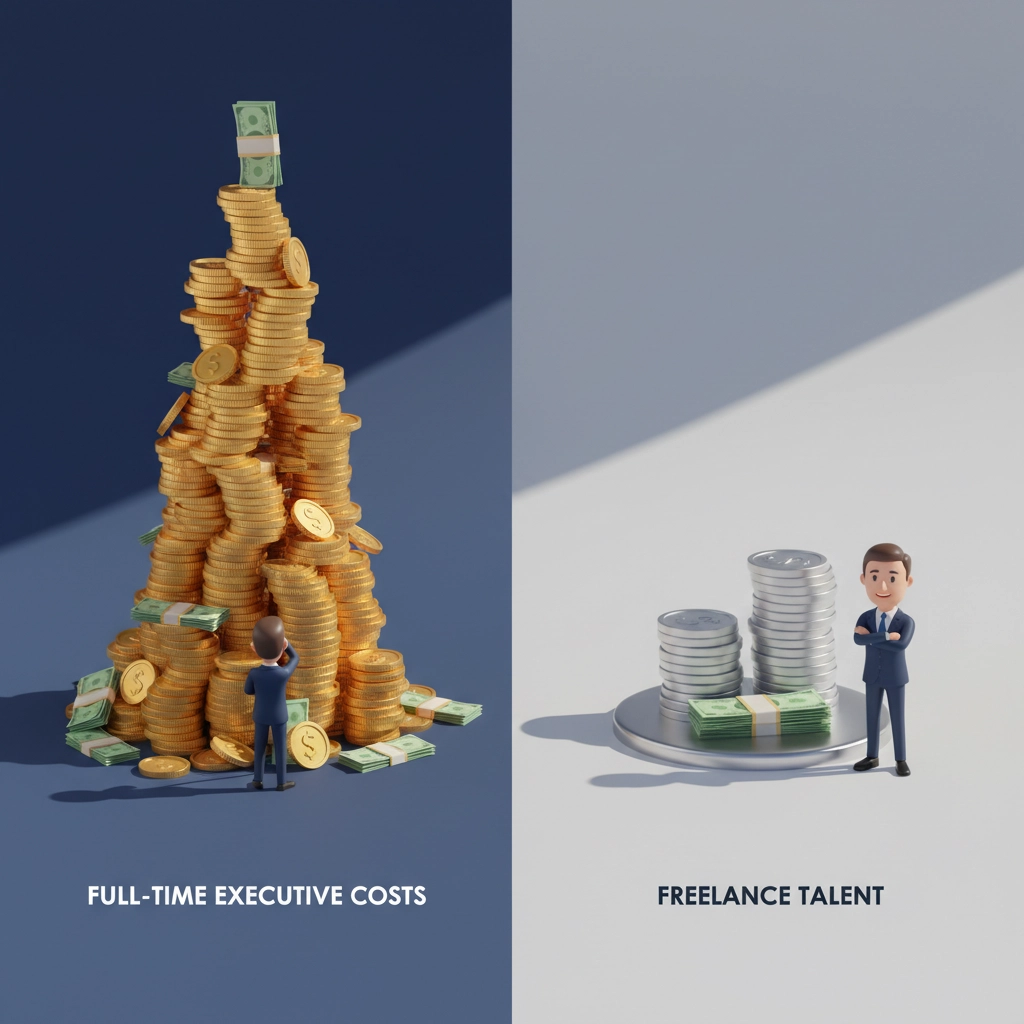
Let's be honest: running an SME in today's market feels like juggling flaming torches while riding a unicycle. You need strategic expertise to grow, but hiring a full-time executive? That's a six-figure commitment that might just sink your cash flow faster than a lead balloon.
Enter fractional leadership: the smart solution that's got UK business owners talking. If you're wondering whether your SME is ready to take the plunge, here are 10 things you absolutely need to know.
1. What Fractional Leadership Actually Is (And Why It's Not Just Fancy Consulting)
Think of fractional leadership as having your cake and eating it too. You get a seasoned executive: we're talking proper C-suite calibre: but only for the days you actually need them. Maybe it's 2-3 days a month, maybe it's a focused 6-month project. The key difference? These aren't consultants who pop in with recommendations and disappear. They're hands-on leaders who roll up their sleeves and get stuck in.
A fractional CFO doesn't just audit your books: they redesign your financial processes. A fractional CTO doesn't just suggest tech upgrades: they implement them. They're accountable for results, not just advice.
2. The Numbers Game: Why Your Wallet Will Thank You
Here's the brutal truth about full-time executives: A decent CFO will cost you £80k-120k annually, plus benefits, plus bonuses, plus the risk they might not be the right fit. That's before you factor in recruitment fees and the 3-6 month learning curve.

With fractional leadership, you're looking at a fraction of that cost: often 20-40% of a full-time salary. You're paying for expertise when you need it, not for someone to sit in meetings about meeting schedules. For most SMEs, this difference between survivable growth and cash flow crisis.
3. Five Red Flags That Scream "You Need Fractional Leadership Now"
Your business is probably ready for fractional leadership if any of these sound familiar:
You're drowning in operational tasks instead of focusing on strategy. If you're spending 80% of your time putting out fires rather than preventing them, you need help.
Departments are working in silos with no one connecting the dots. Marketing doesn't talk to sales, sales doesn't talk to operations, and everyone's frustrated.
You're making big decisions in an echo chamber. When your biggest strategic discussions happen with your reflection in the bathroom mirror, you need experienced voices in the room.
Growth has stalled despite having great products or services. Sometimes you're too close to the problem to see the solution.
You're avoiding opportunities because you don't have the leadership bandwidth to pursue them properly.
4. The Fractional Leadership Lineup: Pick Your Player
Different challenges need different experts. Here's your starting lineup:
Fractional CFO: Perfect if your finances feel like a black box, cash flow keeps you awake at night, or you need someone to speak "investor" during funding rounds.
Fractional CMO: When your marketing feels like throwing spaghetti at the wall, or you need someone who actually understands digital marketing beyond posting on LinkedIn.
Fractional CTO: Essential if technology decisions paralyze you, your current IT setup is held together with digital duct tape, or you're planning any kind of digital transformation.
Fractional COO: The operational wizard who streamlines processes, fixes bottlenecks, and makes your business run like a well-oiled machine.
5. Flexibility Is Your Secret Weapon

Traditional hiring is like buying a car: you're committed whether you need it every day or just weekends. Fractional leadership is like having access to a fleet. Need extra strategic support during a product launch? Scale up. Going through a quiet period? Scale back.
This flexibility is absolutely crucial for SMEs navigating unpredictable markets. You can adapt your leadership team to match your current challenges without the administrative nightmare of hiring and firing.
6. How to Figure Out What You Actually Need
Before you start shopping for fractional leaders, get brutal about diagnosing your pain points:
Time audit yourself: Where are you spending most of your time? If it's not on the core 20% of activities that only you can do, you need help.
Ask your team: Your staff often see problems you're blind to. They'll tell you where processes break down and where leadership gaps hurt performance.
Look at your competition: Where are they pulling ahead? What capabilities do they have that you're missing?
Check your client feedback: Are there consistent themes about what you could do better? Often, these point directly to leadership gaps.
7. Access to Talent That's Usually Out of Your League
Here's something most SME owners don't realize: many top-tier executives actually prefer fractional work. They get variety, work-life balance, and the chance to make a real impact across multiple businesses.
This means you can access executives who've scaled businesses through IPOs, navigated major acquisitions, or built departments from scratch. People who would never consider a full-time role at a 50-person company might jump at the chance to work with you fractionally.
8. Results Happen Fast (Because They Have To)
Fractional leaders are like special forces for business problems: they're trained to assess quickly, act decisively, and deliver results fast. They don't have the luxury of 18-month strategic planning cycles.

Most fractional engagements show measurable improvements within the first 90 days. Why? Because these leaders are professional problem-solvers who've seen similar challenges across multiple industries. They know what works and what doesn't.
9. The Gift That Keeps Giving: Long-Term Benefits
Even after a fractional leader moves on, the systems they've built and the knowledge they've transferred stay with your business. They don't just solve problems: they build capabilities within your existing team.
Think of it as getting a masterclass in leadership while solving immediate business challenges. Your internal team learns from watching experts in action, and the processes they implement continue driving value long after the contract ends.
10. Finding the Right Match: It's Not Just About CVs
Choosing the right fractional leader isn't just about impressive credentials: it's about finding someone who gets your business and fits your culture. Look for:
Relevant industry experience: Someone who understands your market challenges and opportunities.
SME expertise: Leading a 50-person company is different from managing a corporate division. Make sure they've worked in environments similar to yours.
Cultural fit: They'll be working closely with your team, so personality matters as much as competency.
Proven results: Ask for specific examples of improvements they've driven in similar businesses.
Ready to Take the Plunge?
If you've read this far, chances are fractional leadership could be exactly what your SME needs to break through to the next level. The question isn't whether you can afford to bring in fractional expertise: it's whether you can afford not to.
The smartest SME owners are already making this move, gaining unfair advantages while their competitors struggle with the traditional hiring model. Don't let your business be the one playing catch-up.
Ready to explore how fractional leadership could transform your business? The conversation starts with understanding exactly what challenges you're facing and what success looks like for your company.

